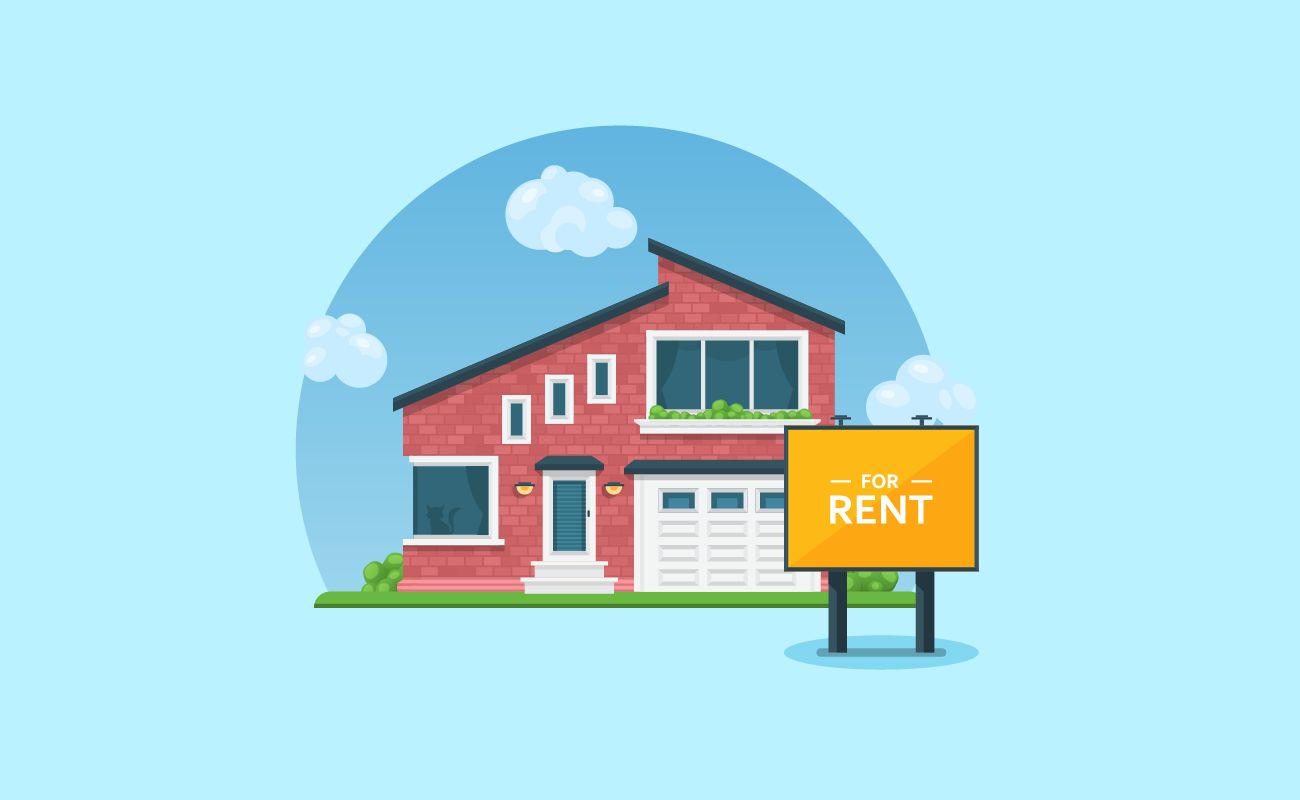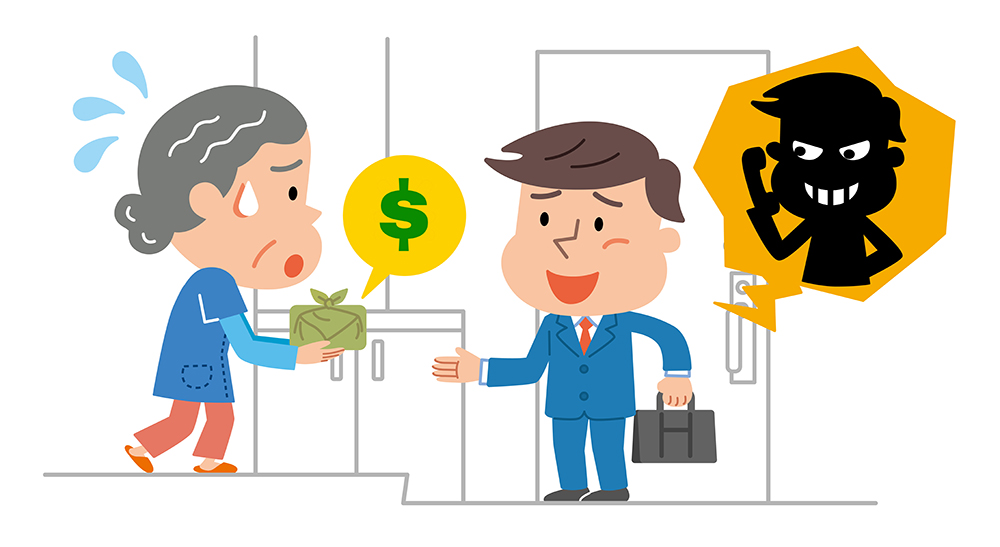
When it comes time to consider purchasing your home, a viable option for many people is the rent-to-own (RTO) option. This practice is gaining favor with young people and families who may not have the means or the credit to secure a mortgage loan. This article will go in-depth on the topic of the rent-to-own real estate option. We'll talk about how it works when it's a good idea, why sellers opt for this type of sale, how it compares to buying a home, pros, cons, and much more. The goal of this article is to give anyone who wants more information about RTO a complete overview, plus links to find out more information. By the end, you should have a good idea if this option could work for you or not.
If purchasing a house under an RTO contract doesn't seem like an appealing process to you, there are other options to consider.
1
Alternative Loans: It might not be possible for you to qualify for a traditional loan, but there are alternative home loans that are more flexible with their stipulations. The USDA home loan or the FHA loan may be able to qualify you for a mortgage. Both have lower income, down payment & credit score requirements than conforming mortgages.
2
Clean up Your Credit: While you're renting your home, you can take steps to clean up your credit. This will take time, but it is possible to raise your credit score enough that you'll qualify for good mortgage rates. You can catch up on any delinquent payments, pay down your balances, consolidate debts, stay current on everything, and use any credit cards you have responsibly.
3
Save While Renting: You may not want to rent forever, but it can give you the stability to save up for a down payment. You know what you have to pay each month, and this makes budgeting easier. You'll be able to put aside more money every month, and this can help you save for expenses.

Here is a table of current local mortgage rates which shows available rates for different home prices, down payment amounts & credit scores.
When you enter an RTO contract, you agree to rent the property for a set amount of time and purchase it once the contract term is up. There is more flexibility in this option, and you usually won't need a large down payment like you would if you were purchasing a home. Many RTO contracts have a term of one to three years. This means that after that set term is up, the tenant will purchase the property from the seller. You'll usually pay a higher rent amount because your rent will be split into two categories. The rent portion of your monthly payment will go toward the seller's mortgage payment on the home, and the rent premium portion will go into an escrow account and be used for the down payment when it comes time to purchase the property.
In April of 2000 the FTC released the results to a survey of 12,000 randomly selected U.S. rent to own customers. This survey represents people who purchased any type of product rent to own industry. Most of the purchases were for home electronics, furniture & appliances. While the purchase prices are far smaller than the cost of a home, many of the concerns are similar to those who are renting a home.
| Description | Statistic |
|---|---|
| Prevalence | |
| used RTO past year | 2.3% |
| used RTO past 5 years | 4.9% |
| Consumer Satisfaction | |
| satisfied with experience | 75% |
| dissatisfied with experience | 19% |
| leading complaint | high prices |
| Success Rate | |
| intended to buy when beginning process | 67% |
| actual purchase rate | 70% |
| intended to purchase & did buy | 87% |
| Late Payments | |
| made a late payment | nearly half |
| fair to very good treatment after late payment | 84% |
| poor treatment & possible abusive collections | 11% |
The entire report is available for download as a PDF here.

High Interest Rates &am; Low Buyer Success Rates
Some rent-to-own shops charge fees & interest which amount to over a 300% mark up over retail. The spreads on rent-to-own homes are typically far tighter, simply because the amount being financed is much higher. That said, the success rates for rent-to-own homes are likely much lower than they are for other types of goods, as the contract both lasts for a longer period of time and is associated with a far larger sum of capital.
Rent to own homes were a popular option in the 1980s & 1990s, but receeded in popularity during the housing bubble as lending standards weakened to where almost anybody with a pulse could "qualify" for a mortgage.

“In mid-2006, I discovered that over 60 percent of these mortgages purchased and sold were defective. Defective mortgages increased during 2007 to over 80 percent of production.”
- Richard M. Bowen, former chief underwriter for Citigroup’s consumer-lending group
Banks got bailed out, mortgage lending standards tightened, and investors scooped up many discount properties from Fannie Mae, Freddie Mac & HUD for pennies on the dollar.
Some of those properties moved into the RTO market, and with tigher consumer lending standards, RTO is once again becoming a popular option.
The exact size of the market is unknown because failed deals are not recorded & successful transactions are not reported on until the property is fully owned by the new owner.

RTO contracts and conditions vary from state to state. However, there are several factors that are almost universal between all of the contracts, no matter when state you're purchasing the property in.

Buying the Property
Once the term is up if the potential buyer decides or isn't able to buy the home, the RTO offer expires. The buyer will forfeit any money they have paid in, including option money and rent. If there is a legal obligation to purchase the property and the buyer forfeits, court proceedings may begin. At the end of the RTO term, if the tenant wants to buy the property, they usually apply for a mortgage. They may deduct the option money and any rent they have paid in so far from the total purchase price.
Maintenance
Usually, there are specifications in the contract concerning maintenance. It isn't uncommon for the person who is purchasing the property to maintain it while they're living there. The tenant can be asked to pay for any repairs, property taxes, insurance, and any homeowner's association fees. Since it is the seller's home, they are technically responsible for taxes, insurance, and homeowner's association fees but they could ask the tenant to pay them. Either way, the tenant will need renter's insurance. It is up to the potential seller to specify what is covered by maintenance and what is not covered. This is very important because if nothing is specified, the tenant could end of doing major repairs instead of basic maintenance.
Option Consideration
With these types of contracts, the potential buyer may have to pay the seller a one-time deposit. This deposit is called an option consideration or option money, and it usually isn't refundable. This deposit gives the potential buyer a right to purchase the property, and not an obligation. The size of the option consideration isn't set, and it can be negotiated by the buyer and seller. Traditionally, it is between 2% and 7.5% with 3% being a popular option of the purchase price. You may also negotiate to have the consideration price onto the purchase price when you close the deal and buy the property.
Price
Your price is what the seller and the tenant have agreed on to buy and sell the property for. This purchase price is usually above the home's current market value. You can choose to have a set rate, or you can choose to decide a purchase price based on market values once your payment term is up. As the real estate market isn't guaranteed, many sellers opt for a fixed rate price.
Rent
While the potential buyer is living in the home during the set term, they are paying rent. A percentage of the rent will typically go toward the purchase price, and this is called a rent credit. It is vital rent is paid on time or else the buyer may not get rental credit & may be assigned a fine. To understand how rental credit works, let us consider a $225,000 RTO property with a 3% option consideration. This will give you a $6,750 option consideration that can be credited toward the purchase price. The rent payments are $1,550 each month with $300 earmarked as a rent credit. The RTO term is 24 months until you have to purchase the home.
If you take all of these things into consideration, you get:
| RTO Example | Amount |
|---|---|
| Locked in Purchase Price | $225,000 |
| Option Consideration (3%) | - $6,750 |
| Rent Credits ($300 x 24) | - $7,200 |
| Final Purchase Price | $211,050 |
All of these factors will typically make your rent payments higher than normal. Buyers typically sees them as down payments for the home they're purchasing, and the sellers see them as compensation for maintaining the property and taking it off the market.
If everything goes well and the buyer is ready and able to purchase the home at the end of the term, they get a better deal, but ultimately it works out for both parties. The home won't sit vacant as it traditionally would, and this works for the seller.
If the buyer defaults on the agreement, the seller gets a much better deal.
The costs of RTO, straight renting, or purchasing a home depends largely on several factors. You should carefully consider all of them before you make your final decision, as you could end up accidentally locking yourself into a contract that costs you thousands more than other options. If you're not sure if renting, RTO, or purchasing a property is right for you, use this tool to check the costs.
Typically RTO availability is higher when the local housing market is weak and property owners feel the need to be more flexible to keep positive cashflow.
Traditionally, there are two different types of RTO options. Each strategy has its advantages and disadvantages, as well as reasons why sellers opt to do RTO for their properties. As long as a seller owns the home outright, they can choose to use the RTO strategy to sell the property. This includes condominiums, townhouses, single-family homes, and multi-family homes.
This method starts with a seller who owns a property, and the goal is to find a tenant who is willing to rent-to-own the property. The property owner markets the home as an RTO, sets up showings, takes applications, and filters out the applicants. It allows the prospective tenant to move in right away.
The second method starts with a tenant who wants to RTO a property and wants to buy it out at the end of the contract's term. An investor will then match the tenant to a property that works with their budget. When they locate a property, they can collaborate to close the deal, and the tenant can purchase the property on an RTO basis. This method works out well for real estate investors as they don't own the home, they're just acting as brokers to find the tenant their RTO property.
There are several reasons why a seller may choose to use this option when they want to sell their property. It has been gaining popularity for years, and investors are trying to exit their positions while locking in gains from buying homes near the bottom after the recession.
When you rent-to-own, you can target both buyers and renters as potential candidates to RTO the property. A buyer could purchase the property on an RTO basis, and either live in it or turn it into an investment property once the contract ends. A renter may want to purchase a property but doesn't have the means to do so right now. Any RTO property could be a big draw for them because it gives them time to save before purchasing the property. The seller has an increased chance of RTO their property.
Renters can be very hard on rental homes if they don't have a vested interest in them. However, with RTO, they have a vested interest because they will be purchasing this home at the end of the contract. This will usually urge them to take better care of the property while they're living in it.
If you don't use this method and your home sits vacant for however long it takes to sell; you're not making money. If you have a tenant in your home for this period, you'll be getting a steady cash flow each month in the form of rent. You won't have to worry about hurrying to sell your home to recoup some of your money.
Traditionally, if you opt to rent a home on a rent-to-own basis, the seller is able to charge higher rent amounts. This is because the rent amounts go toward a down payment on the home and to cover the seller's mortgage payment. They can also charge a higher rent because they have more flexible payment terms.
The real estate market is almost impossible to predict one month from the next, let along one year from the next. If you enter a contract with a tenant for RTO, you can lock in a selling price for the duration of your contract. This means that no matter what the real estate market does when it's time for the contract to end, you may end up getting more for your home than it's worth in the current market.
If a seller chooses to sell their homes outright, they immediately lose out on any tax benefits. However, with renting-to-own, the seller gets to enjoy the tax benefits that come with owning their home for a few more years until the contract ends and the tenant buys the property.
Many low-cost properties have major issues. Unscrupulous parties may try to sign tenants who unwittingly agree to pay out of pocket to repair major issues with a property they do not yet own.

There are several individuals that the rent-to-own option would be a good fit for. It can be a way to help you polish your credit or add depth to a thin credit file.

Difficulty Obtaining Financing
The more times a person tries to obtain a mortgage and gets turned down, the harder an impact this will have on their credit. It could even lower their credit score. If a lender pulls their credit report and sees multiple failed attempts in a short amount of time, they'll be less likely to work with them. A rent-to-own contract usually doesn't require a credit check, and the tenant can give their credit score time to recover.
Low or Poor Credit
Traditionally, the lower your credit score is, the more likely you are to either get denied for a mortgage or get charged higher interest rates. You want to get the best rates possible because this will reduce the amount you pay back in interest over the life of your mortgage. An RTO contract can help you strengthen your credit by giving you a history of on-time payments. It can also add diversity to your credit history, which can improve your score over time.
High Debt-to-Income Ratio
Your debt-to-income ratio can have a negative impact on your credit history and stop you from obtaining a mortgage if it is on the high end. By entering an RTO contract, the individual with a high debt-to-income ratio won't be adding on more debt right away. They usually have two or three years to straighten out their finances and lower their debt-to-income ratio, so they qualify for a mortgage.
Short on Money
Many people who want to purchase their own homes might not have the money on hand for a 20% down payment or money to cover the miscellaneous fees that come with buying a home. An RTO contract gives them a period to save up for a downpayment, and a portion of their rent money will also go toward their down payment or earnest money once the contract is up. This can act as a cushion, and they won't have to worry about paying such a high down payment amount.

There are several misconceptions about the RTO process, and they have the potential to stop buyers from considering this option when it comes time to purchase a property.
When you decide that rent-to-own is the right choice for you, you'll have to start looking for places that list RTO homes for sale. It might seem like a difficult thing to find at first, but several websites list them. One thing to note about these types of sites is some of them charge a fee to view information. Be sure to use a credit card rather than a debit card so you can more easliy dispute charges if you keep getting charged after you stopped using the service and contacted the company to cancel any ongoing subscriptions. It is hard to point out gotchas to specific websites while publishing an article like this because businesses can be bought & sold, and new owners may be more aggressive with monetizing customers than the old owner was.
The first website on our list is getrenttoown.com. With this site, you simply put in your desired zip code and click search. It'll show you houses that are for sale because of foreclosure, owner financed, pre-foreclosures, auctions, for sale by owner, and RTO. Once you sign up for the site, you'll get access to contact information, information about the listing, area demographics, and a property summary. The site also has an RTO buyer's guide, overviews, and resources.
At homestarsearch.com, you start by typing in the zip code of the area you want to search RTO listings in. It'll pull up any RTO homes within a certain mile radius of your desired zip code, and you can click on each one to get more details. Once you've registered for the site, you'll get in-depth information about each property including pricing, the number of bedrooms or bathrooms, and how big the property is. There is also seller contact details so you can talk to them directly.
If you want to see different types of homes for sale in your area including RTO listings, housinglist.com is a great resource. When you pull up the site, it'll ask you for your desired zip code. When you enter this information, a list of different houses will come up along with how they're being sold. There are foreclosures, for sale by owner, real estate listings, and RTOs. You click on 'get more details' to see more about the houses. You register for the site to get access to contact information and additional house information.
The iRentToOwn.com site operates like the ones listed above. You enter your zip code, and it'll put up different houses in the area. You can filter your results by bedrooms, and the listings show who owns the home before you click on them. It also tells you what types of credit are accepted. After you've found a listing and clicked on it, and for more information you register for the site. You can opt-in for alerts for properties that interest you, and contact the sellers for more information.
The justrenttoown.com site also lets you search by zip code for eligible homes. As soon as you've input your zip code and searched, you'll get a list of homes. You can click for details, but you have to register to see an in-depth offering of each listing. When you register, you will get access to seller contact information as well. There is a rent-to-own guide for potential applicants as well.
Zillow.com allows potential tenants to search by zip code for houses. Once you've searched, you'll be able to filter the home results by type from RTO and foreclosures to auctions and broker-owned. You'll have to create an account to get seller information, but there are email forms you can fill out to contact a broker directly to ask about the property. Be warned that Zillow has a history of cross-selling user information to third party brokers rather that choosing to connect interested parties with the real property broker. The button to contact the correct broker may be grayed out and their contact information may be hidden below the fold after many screens of other information.
When it comes to renting your home or owning your home, there are pros and cons for each option. It all depends on what you want in the big picture for yourself and your family.
In countries like Germany most people rent rather than buying. Rental rates have been rising across the United States since the financial crisis as wages have failed to keep up with inflation & QE drove asset prices higher.
| Type of Household | Households | % of Total | Residents | % of Total |
|---|---|---|---|---|
| Renter-Occupied | 43,837,496 | 37% | 111,054,354 | 35% |
| Owner-Occupied | 75,022,569 | 63% | 203,993,282 | 65% |
| Total | 118,860,065 | 100% | 315,047,636 | 100% |
Source: 2016 American Community Survey, 1-Year Estimates, US Census Bureau. Updated 9/2017

Renting-to-own your next property also comes with several pros and cons. The payoffs can be worth going through the process, but there are large drawbacks to consider as well.

Choosing the Right Contract Structure for Your Needs
The option of renting-to-own a property comes with many different contract types that the buyer and seller can choose to utilize. Each of these contracts is slightly different in what they offer for the buyer and the seller.
This option, also referred to as a land installment contract or contract for deed is the most popular contract for RTO agreements. A lease purchase contract uses traditional rental contracts, and it locks the tenant into purchasing the house once the contract is up. It should include rent amounts and due dates, rent credit amounts, property price, terms and rules, and duration of the contract. You will also have to decide who takes care of maintenance and repairs while the RTO contract is binding, and what portion of the rent payment goes to the down payment amount as a rent credit. This type of contract makes it mandatory for the tenant to purchase the home once the contract is up. If they choose not to, or if they're unable to, they can face legal issues.
A lease option is a contract between the potential tenant and the seller that specifies the agreement to rent the property for a set amount of time and it comes with a right to refuse option that gives the potential buyer a way out at the end of the contract's termination date. It should include how much the rent is, when it is due, fees, penalties, security deposit amounts, pets, smoking requirements, parking, maintenance responsibilities, and utilities. The main difference between a traditional lease and a rent-to-own lease is deciding who will pay for upkeep and maintenance. In a traditional lease, a landlord would take care of all of these things. With RTO, the tenant might be responsible. It should also clearly specify that any rent credits or any amount of money that the tenant has had set in escrow becomes forfeit if they choose not to purchase the home. This releases them from their obligation to purchase the property, and the seller is responsible for finding a new tenant.
A large portion of lease option contracts simply end up as an expensive way to rent, because the renter pays more for the rent while living in the home to lock in the option & whatever caused them to not be able to qualify for a traditional mortgage often still holds them back from being able to qualify for one at the end of the mortgage.

Structuring Your Contract With Flexibility to Increase Your Odds of Success
For maximum personal protection it is best for renters to keep the lease & purchase options as 2 separate contracts if possible. This protects the tenant from being liable to pay for unknown & expensive property maintenance while also making it clear what the costs are for each aspect of the agreements. A leaky roof seen during the first rain is easy enough to spot, but it might not be easy to know there is a problem with a septic tank until you lived in the house for a while.

In this option the seller takes the buyer's monthly payment and applies it toward the mortgage, with a premium over the mortgage payment the seller can pocket.
Some lenders forbid this practice in their loan agreements. And there is also the risk that the property owner may keep the monthly payments without applying them toward the mortgage payment, leading to foreclosures.
Although the RTO option seems good on paper, there are several potential pitfalls that both buyers and sellers should be wary of. They could end up costing them thousands if they're not careful.
Even though RTO is catching on and gaining popularity, they are still limited in comparison to regular buying methods. You may have difficulty finding rent-to-own options in the area that you want to purchase a home.
You will usually pay higher prices with a rent-to-own arrangement. These inflated prices are due to your rent money going for two different things, as well as miscellaneous fees that the tenant will be responsible for. You could also start out paying a slightly lower price and have it go up each year. Some clever buyers have paid inflated rents for a short period of time before coming into a "sudden windfall" to buy the property early, though contracts are typically created by the seller with the seller's interests first.
As a tenant with an RTO contract, you have to keep in mind that the seller could lose the house during the rental period. This could happen due to foreclosure, divorce, or an inability to keep up with payments. If this happens, the tenant loses out on purchasing the house and will most likely forfeit any money they paid in.

Unfortunately, there are a lot of RTO scams that any potential buyers have to watch out for. If something sounds too good to be true, it usually is. If you don't' trust the seller, or if they're asking for a lot of money upfront, leave it. There are legitimate RTO options available. You don't have to take the first one that comes along. Ensure you read the fine print and have a Realtor and/or a real estate lawyer verify the contract is fair. Many deals are fair - particularly those offered by local nonprofits like SHOP - but dishonest companies who do not disclose major issues can destroy people's lives:
“rent-to-own agreements reside in a gray area of the law. An examination by The New York Times of contracts and court filings, as well as interviews with housing lawyers and more than a dozen of Vision’s customers across the country, found that these deals are risky, lack consumer protections and may not be enforceable in some states. Most tenants walk away with nothing, having sunk money for rent and repairs into homes they had once hoped to own. Others faced surprise evictions, having signed a contract that did not disclose what repairs were needed, yet set a deadline for making sure the home was up to local housing code. As different tenants move in and out of the same property over the course of years, many homes fall further into disrepair.”
If you have any concerns please contact the HUD Housing Counseling and Referral Line at 1-800-569-4287 before signing any contract, or if you already signed a bad contract, as soon as you run into a major issue.
These consequences should be clearly outlined in the rent-to-own contract. If a tenant misses payments, the seller can choose to start the eviction process, and the buyer will forfeit any payments that they have made so far, including the money that is in escrow. Depending on which type of contract you're locked into, there may be legal consequences. If you've chosen a lease option, you have the choice to opt out of buying the home without any lasting consequences. However, if you've chosen the lease purchase, you are required to buy the home at the end of the contract. If you don't, the seller could start legal proceedings for breach of contract.
The Federal Reserve has hinted they are likely to taper their bond buying program later this year. Lock in today's low rates and save on your loan.
Are you paying too much for your mortgage?
Check your refinance options with a trusted El Monte lender.
Answer a few questions below and connect with a lender who can help you refinance and save today!